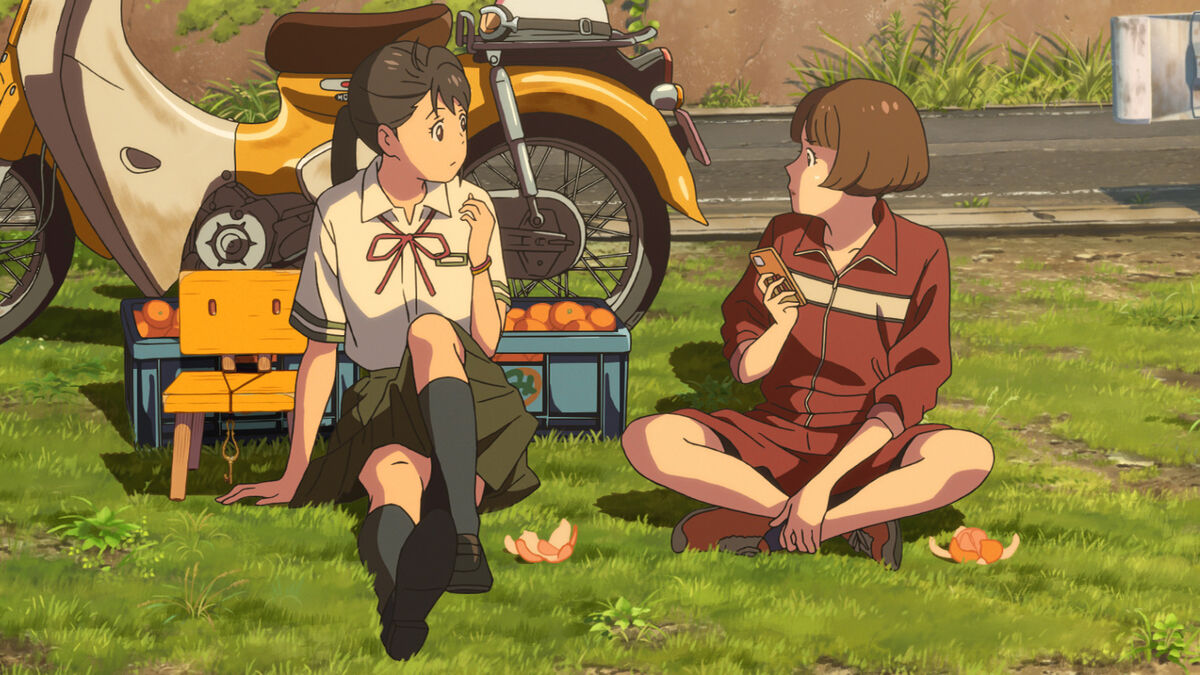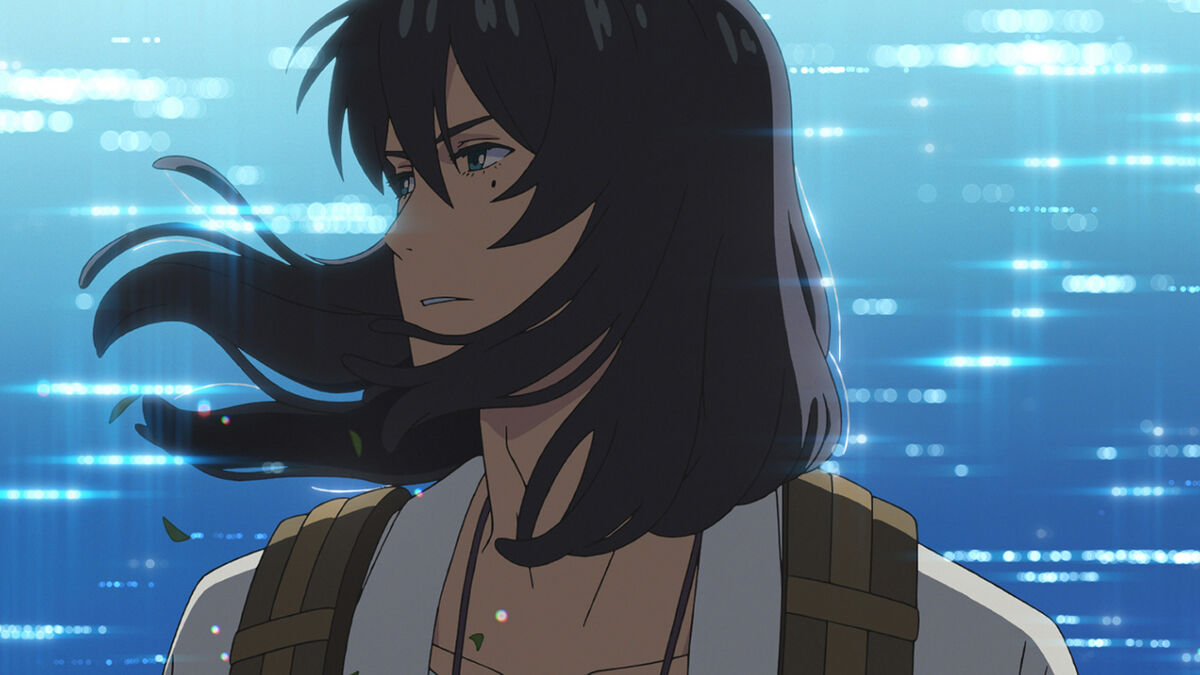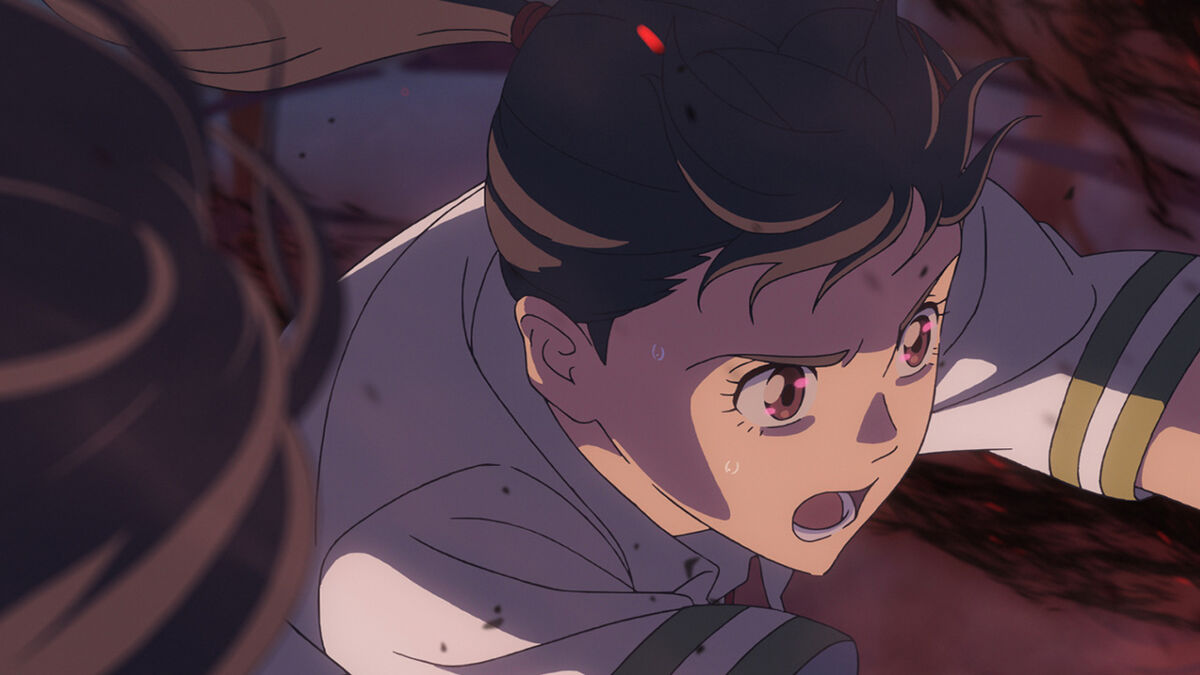When a magnitude 9 earthquake struck Japan’s Tohoku region on March 11, 2011, Makoto Shinkai felt the jolting shocks from hundreds of miles away. The filmmaker was in a studio in Tokyo, finishing the last touches of his animated movie Children Who Chase Lost Voices. “My computer starts falling from the desk and everything is shaking,” he recalls.
Shinkai didn’t know what was going on — nor did most people who rushed out of their buildings and crowded the streets. But he wanted to go home as soon as possible to check on his family’s safety — which he fortunately could do because he lived within walking distance. Thankfully, his family was safe. “My daughter wasn’t even one year old,” Shinkai says.
The filmmaker knows Tokyo wasn’t hit nearly as hard as the Tohoku region. The disaster, also known as the Great East Japan Earthquake, is the strongest one recorded in the country’s history — more than 18,000 lost their lives. It’s also the main inspiration behind Suzume, Shinkai’s latest project that premieres in U.S. theaters this weekend (the movie released in Japan last November.) In the film, the eponymous character left Tohoku as a child after losing her mom to the 2011 earthquake and tsunami. When she meets the enigmatic Souta, Suzume, now 17, discovers that her country’s safety is threatened. She embarks on a road trip across Japan to protect its people from more catastrophic earthquakes — cautioned by the emergency alerts on her phone. Even these alarms come from Shinkai’s memories of the 2011 calamity. “There were a lot of aftershocks — every time there would be an aftershock, our cell phones would go off,” he said. “I would just hold my daughter.”
When Children Who Chase Lost Voices premiered later in 2011, it was already years into Shinkai’s career as a filmmaker. He released his first animated project in 2002 — the 25-minute sci-fi Voices of a Distant Star — and in the next decade directed features including The Place Promised in Our Early Days and 5 Centimeters per Second. But it wasn’t until 2016 when the filmmaker’s global popularity soared. That year, Shinkai’s fantasy romance Your Name surpassed Hayao Miyazaki’s Spirited Away to become the highest-grossing anime film in history. The movie garnered more than $331 million at the international box office, a number that has only grown in the period since. Shinkai’s next project, Weathering With You, was another spectacle. Though its box office numbers were lower than that of Your Name, the film became the highest-grossing Japanese film in 2019. It was also selected as Japan’s entry for Best International Feature Film at the 2020 Oscars. Commercial success and critical acclaim aside, Shinkai has built a reputation as a master animator whose films are theatrical events to be marveled at.
Perhaps because of these feats, the filmmaker is often likened to the legendary director that is Hayao Miyazaki. But Shinkai says this is a comparison drawn more commonly outside of Asia. “In the West and specifically European countries, when they think of animation and film, Miyazaki is one of the first names to come up,” he tells Fandom via a translator. “So most of the time I’m compared, or there’s some kind of similarity drawn as the ‘next Miyazaki’ — which is a separate story.” This line of thought is more rare on the other side of the world, according to the director. “Conversely, in Asia, I feel animation as a medium has much more penetration in daily life,” Shinkai says. “For example, in Korea right now, Suzume is in theaters and it’s thankfully a hit. But at the same time, they’re also screening Slam Dunk.” He is talking about Takehiko Inoue’s The First Slam Dunk, a sports movie based on Inoue’s manga series. “So comparisons are drawn between those two animated films,” Shinkai continues. “In the West, it’s easy to draw the comparison between Ghibli whereas in Asia I think animation is seen slightly differently.”

That doesn’t diminish the fact that Studio Ghibli has served as a major inspiration to Shinkai. Even in Suzume, references to films from the animation giant abound. The filmmaker discusses the titular character’s road trip across Japan — and the relationships she forms with women in her journey. “I go back to Miyazaki’s Kiki’s Delivery Service and how that’s a coming-of-age story of a young woman,” Shinkai explains. “Throughout [Kiki’s] journey she too meets many women.” There’s Osono, for instance, a baker who is expecting a baby, and Madame, an older woman who wants to celebrate her granddaughter’s birthday. “[Kiki] has various different role models throughout her journey. So thinking about that backdrop with making Suzume, I wanted her to also meet many different women and have some kind of learning process through that.” While Suzume doesn’t stay long in the cities and towns she visits, the women she interacts with — who come from all stages of life — leave a lasting impression.
That’s a large part of why even though Souta forms a special relationship with Suzume on her road trip, the film isn’t just a romantic drama. From 2002’s Voices of a Distant Star to 2019’s Weathering With You, Shinkai has demonstrated his gift for writing poignant tales about star-crossed lovers. But that was not the genre the filmmaker wanted to explore this time. “Suzume isn’t necessarily a film about star-crossed lovers,” Shinkai says. “I wanted to do something different with this film, and it’s really about her coming of age.”
In particular, Shinkai was interested in examining Suzume’s growth and how the 2011 Tohoku earthquake affected her. “I think that earthquake in many ways divided the country into the victims who were directly affected, and those who weren’t,” he shares. “And most of Japan is in the latter category — myself included.” While people across Japan experienced shocks of varying magnitudes, those in the Tohoku region suffered far worse. “A part of me was really thinking, why was it only them?” Shinkai says. “How a non-victim can tell a story about a victim — coming face-to-face with that idea is really how I pushed through writing the plot for the film.” The result is a story in which Suzume grows far more through grief and loss than through romance.
As Suzume traverses Japan in the film, she visits locations beyond Tohoku that have been hit by natural disasters in real life. “She travels from Kyushu to Ehime where in 2018, perhaps because of climate change, there were massive rainstorms that caused landslides,” Shinkai explains. “And from Ehime she travels to Kobe, where in 1995, it was called the Hanshin-Awaji earthquake.” This event, also known as the Great Hanshin earthquake, claimed more than 6,000 lives. And though there is no time travel element in the movie, these locations Suzume visits point to cataclysmal incidents in Japan’s history. The character eventually makes her way to Tokyo, where the connection to another seismic event is obvious. “In Tokyo about 100 years ago in 1923, there was the Kanto dai-jishin,” Shinkai says. He’s referring to the 7.9 magnitude Great Kanto earthquake that recorded a death toll of more than 140,000.
The director says the actual process of determining Suzume’s path across Japan was not too complicated. “Suzume was from Tohoku originally, and like most people after the disaster, she had to travel West,” Shinkai says. “I wanted to start her in Kyushu and it’s a story about her traveling through Japan returning home. With that said, there aren’t too many routes — Japan’s not a huge, huge country.” Once he set the 2011 earthquake as a pillar of the film and solidified Suzume visiting ruins as another theme, Shinkai says the route presented itself.

It’s a route that the filmmaker himself trod in the making of this movie — though he did not initially plan to. At first, Shinkai wanted to primarily use existing software to map out Suzume’s path. “I believe that with Google Maps and Street View, that is a very useful tool to at least experience or see different locations,” he says. “So part of me is of the belief that you don’t necessarily have to go location scouting to be able to make a film.” As the director and writer of the movie, Shinkai shouldered many responsibilities — and he adds that the storyboarding process took a year. But while he was not intending to go location scouting, his staff convinced him otherwise. “To their point and credit there were certain details and nuances that I really couldn’t pick up from Street View alone,” Shinkai says. “It ended up being very helpful.”
Shinkai has a clear idea of what his goals are when it comes to creating art these days. “For me, the most important factor is to create a satisfying piece of entertainment,” Shinkai said. “I want a reason for people to come out of their homes and go all the way to movie theaters.” He lists out the steps that audiences now have to take for the theatrical experience, when many films could be streamed from their devices: “Actually leave your house,” take public transportation, and spend two hours in what he calls a dark box. “For me, to the people who have gone through all of these hurdles, to deliver a satisfying piece of entertainment is a huge part of what I consider success,” Shinkai says.
That doesn’t mean he’s not taking other metrics into consideration. “Of course when you have a studio and team of hundreds of people I can’t deny the importance of box office and the award recognition as well,” Shinkai continues. “And that’s another reason why six months after the film has been released, I’m still touring the world promoting the film.” If it was entirely up to him, Shinkai admits he may be spending his time differently. “To be perfectly honest, I’m personally not that interested in the film festival or the PR efforts, I would much rather interface directly with the fans,” he says. “But at the same time I accept and acknowledge the importance of the director elevating the film through different means, and that in and of itself can increase the accessibility.” What he enjoys the most, though, is hearing the fans’ voices as they share their experience of watching Suzume. 
In the case of this movie, he’s seen different responses from viewers in Japan. “How individuals experienced the 2011 earthquake is a large part of how they interpret [Suzume],” he says. “Especially my main audience, the younger adults, they either don’t remember the earthquake or perhaps haven’t experienced it directly, so they see the film as this fun road movie.” Meanwhile, those who live in the Tohoku region and who have lost loved ones to the catastrophe don’t see Suzume as only an adventure film. “No one said this to my face, but through the Internet I’ve heard a large portion of them were either hurt by this film or were forced to remember something they would rather not,” Shinkai says. “Why did you make this film? There are certain voices like that as well.”
The role of art in the world is something Shinkai has thought deeply about. “I wanted to do something that only entertainment could do, and through entertainment come face-to-face with what disaster means,” he says. “To some degree, I think the criticism couldn’t be avoided. That is something I’ll have to carry onto the next film as I continue to ideate on what I’m going to do next.”
Suzume is now playing in U.S. theaters.
Related